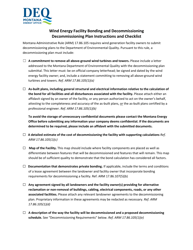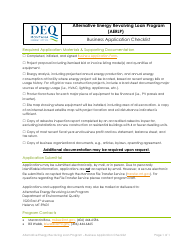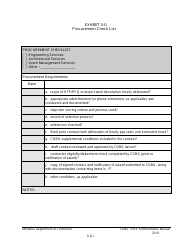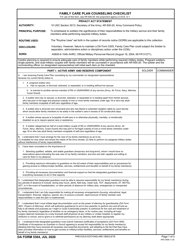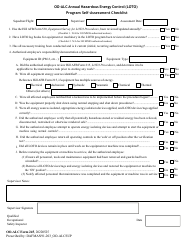Wind Energy Decommissioning Plan Checklist - Montana
Wind Energy Decommissioning Plan Checklist is a legal document that was released by the Montana Department of Environmental Quality - a government authority operating within Montana.
FAQ
Q: What is a wind energy decommissioning plan?
A: A wind energy decommissioning plan outlines the process for removing and dismantling wind turbines and other related infrastructure once they reach the end of their operational life.
Q: Why is a decommissioning plan necessary for wind energy projects?
A: A decommissioning plan is necessary to ensure the safe and environmentally responsible removal of wind turbines and infrastructure, as well as to address any potential impact on the surrounding area.
Q: What should be included in a wind energy decommissioning plan?
A: A wind energy decommissioning plan should include details on the methods and procedures for dismantling and removing wind turbines, plans for dealing with any hazardous materials, and provisions for site restoration and reclamation.
Q: Who is responsible for creating a decommissioning plan for wind energy projects?
A: The owner or operator of a wind energy project is typically responsible for creating a decommissioning plan in accordance with local regulations and requirements.
Q: What are the key considerations for wind energy decommissioning in Montana?
A: Key considerations for wind energy decommissioning in Montana may include adherence to state and federal regulations, coordination with local authorities, and proper handling of any hazardous materials.
Q: What are the potential environmental impacts of wind energy decommissioning?
A: The potential environmental impacts of wind energy decommissioning can include soil erosion, release of hazardous materials, and disruption to wildlife habitats. Proper planning and mitigation measures are necessary to minimize these impacts.
Q: How long does the decommissioning process for wind energy projects typically take?
A: The decommissioning process for wind energy projects can vary depending on the size and complexity of the project, but it generally takes several months to a year to complete.
Q: What happens to the land after wind energy decommissioning?
A: After wind energy decommissioning, the land can be restored and reclaimed for other uses, such as agriculture or natural habitat. The specific plans for land use will depend on local regulations and the preferences of landowners.
Q: Are there any financial requirements or bonds associated with wind energy decommissioning?
A: In Montana, wind energy project developers must provide financial assurance, such as a bond or letter of credit, to cover the costs of decommissioning and site restoration in case the owner fails to fulfill their obligations.
Q: What role do local communities play in wind energy decommissioning?
A: Local communities may have a role in the wind energy decommissioning process, such as providing input on site restoration plans or participating in discussions with project developers and regulators.
Form Details:
- The latest edition currently provided by the Montana Department of Environmental Quality;
- Ready to use and print;
- Easy to customize;
- Compatible with most PDF-viewing applications;
- Fill out the form in our online filing application.
Download a fillable version of the form by clicking the link below or browse more documents and templates provided by the Montana Department of Environmental Quality.

